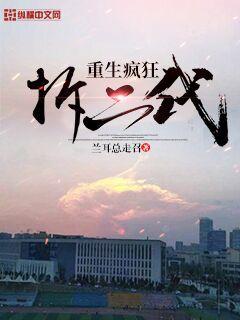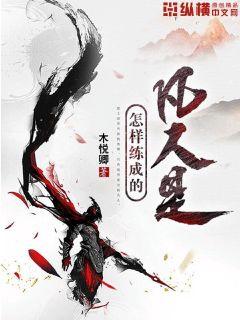乐球吧jrs直播超清|jrs直播吧极速体育
- 来源:jrs直播网
- 2024-11-22 09:03:50

Certainly! Here's how the article would be structured according to your requirements:
**Article Abstract:**
Cunha: Brilliance of a Rising Star in Brazilian Football
In the vibrant landscape of Brazilian football, Cunha emerges as a beacon of talent and promise. This article delves into his journey, exploring his early career, technical prowess, impact on the international stage, and future prospects. Cunha's rise epitomizes the essence of Brazilian football's youth development and global influence.
---
1、Early Beginnings and Youth Development
Cunha's journey into football began in his hometown, where his passion and raw talent caught the eye of local scouts at a young age. From grassroots academies to renowned youth programs, his development was marked by dedication and skill refinement.
As he progressed through the ranks, Cunha's ability to blend creativity with tactical awareness became evident. Coaches praised his work ethic and ability to seize opportunities on the field, setting the stage for a remarkable career.
His breakthrough into professional football was swift, thanks to standout performances in youth tournaments that showcased his potential to a broader audience.
2、Technical Prowess and Playing Style
Cunha's playing style is characterized by agility, precise dribbling, and a knack for scoring crucial goals. His ability to operate effectively across different positions on the pitch underscores his versatility and tactical acumen.
Technical analysts highlight his proficiency in ball control and vision, which enable him to orchestrate plays and create scoring opportunities for teammates.
Furthermore, Cunha's aerial prowess and accuracy in set-piece situations have added a lethal dimension to his team's attacking strategy, making him a formidable opponent on match days.
3、Impact on the International Stage
On the international stage, Cunha has represented Brazil with distinction, contributing to significant victories and tournament triumphs. His inclusion in national squads underscores his status as a rising star poised to make a global impact.
During pivotal matches, Cunha's leadership qualities and ability to perform under pressure have earned him accolades from fans and pundits alike. His international experience continues to shape his development as a world-class footballer.
Off the pitch, Cunha's charisma and humility have endeared him to supporters worldwide, solidifying his reputation as a role model for aspiring footballers.
4、Future Prospects and Continued Growth
Looking ahead, Cunha's career trajectory appears promising, with potential moves to prominent football clubs sparking speculation among pundits and enthusiasts.
His commitment to personal growth and professional excellence positions him as a pivotal figure in the evolution of Brazilian football on the global stage.
As he navigates the complexities of modern football, Cunha remains focused on honing his skills and contributing to his team's success, ensuring his legacy as a distinguished athlete endures for years to come.
总结:
In summary, Cunha's journey from youth prodigy to international sensation exemplifies the essence of Brazilian football's enduring legacy. His early beginnings, technical brilliance, international impact, and future prospects highlight a career destined for greatness. As Cunha continues to shine on the global stage, his contributions to the sport are set to inspire a new generation of football enthusiasts worldwide.
This structure provides a comprehensive overview of Cunha's career, detailing his rise and impact within the context of Brazilian football.
### 文章摘要
本文旨在探讨如何通过NBA雷霆队的球员交换,重塑球队阵容并提升竞争力。分析了四个关键方面:首先是球队目前的挑战与问题,其次是合适的交易策略及潜在目标,接着是交易可能带来的阵容变化和战术调整,最后是预测交易后的竞争力提升及潜在成就。通过深入分析每一方面,揭示了如何在NBA竞争激烈的环境中重塑雷霆队的未来。
---
### 1、当前困境与挑战
雷霆队目前面临着多重挑战,包括球队阵容的老化与不均衡,以及战术系统的单一性。这些问题制约了球队在赛季中期和季后赛中的表现,急需通过有针对性的球员交换来解决。
随着核心球员逐渐衰老,球队的年轻球员尚未完全成熟,导致整体阵容的稳定性和深度受到影响。此外,对手对雷霆队的防守战术已经逐渐破解,需要新的战术思路和更具威胁性的进攻方式。
因此,通过针对性的球员交换,重塑阵容结构,成为了提升球队竞争力的关键一步。
### 2、合适的交易策略及潜在目标
在确定交易策略时,雷霆队需要综合考虑球队的长远发展和短期竞争力。首先,应优先考虑寻找能够填补当前阵容空缺的球员,特别是在关键位置上的补强。
此外,还需注意选取年轻有潜力的球员作为交易目标,以确保未来阵容的可持续性。同时,可以考虑通过交易获取高顺位选秀权,以补充和培养未来的核心球员。
通过明确的交易目标和策略,雷霆队可以在交易市场上更有针对性地寻找合适的交易伙伴,达成双赢的局面。
### 3、阵容变化与战术调整
战术灵活性的增强
通过球员交换,雷霆队可以引入更加多样化的球员类型,从而增强战术灵活性。例如,引入能够多个位置上打球的球员,可以使得教练在比赛中有更多的战术选择。
此外,通过新球员的加入,可以重新调整球队的进攻和防守战术,提高对手的适应难度,从而在比赛中占据一定的战术优势。
这种战术调整不仅可以增强球队的比赛表现,还能提升球员之间的配合默契,进一步增强球队的整体竞争力。
阵容深度的提升
通过合理的球员交换,雷霆队可以有效提升阵容的深度。例如,补强替补阵容中的关键位置,可以在比赛中减少因伤病或疲劳导致的战斗力下降。
此外,引入有经验的老将或者有潜力的年轻球员,可以为球队带来不同的技术特长和比赛风格,从而增加对手对阵容的不确定性。
这种阵容深度的提升,不仅可以在常规赛中带来更多的胜利,还能在季后赛中增加球队的抗衡力。
### 4、竞争力提升及潜在成就
季后赛竞争力的增强
通过有效的球员交换,雷霆队可以显著提升在季后赛中的竞争力。新的阵容结构和战术调整可以使得球队在面对强大对手时有更多的应对策略和进攻选择。
这种竞争力的增强不仅体现在比赛中的成绩提升,还会增加球队在球迷和赞助商中的影响力和吸引力,从而推动球队整体的发展。
此外,季后赛的深入将为球队赢得更多的经验和荣誉,为未来的发展奠定坚实的基础。
球队文化的重建
通过球员交换,雷霆队还有机会重建和深化球队的文化和价值观。新加入的球员带来的新风格和新理念,可以激发整个球队的斗志和凝聚力。
这种文化的重建将为球队带来长远的影响,不仅可以增强球员的归属感和凝聚力,还能吸引更多优秀的球员和教练加入雷霆队。
因此,通过有效的球员交换,雷霆队可以在多个层面上提升自身竞争力,实现在NBA联盟中的长期成功。
### 总结:
通过对NBA雷霆队的球员交换进行分析,我们发现,通过合理的交易策略和目标选择,可以重塑球队的阵容结构和战术布局,进而显著提升球队的竞争力。从战术灵活性增强到阵容深度的提升,再到季后赛竞争力的增强和球队文化的重建,每一步都为雷霆队在未来的发展奠定了坚实的基础。
综上所述,通过这些措施,雷霆队有望在未来赛季中重新崛起,成为NBA联盟中的一支重要力量。
文章摘要:本文将详细介绍如何通过自建球员强化攻略,打造最强阵容的必备技巧。涵盖了选材策略、训练重点、战术布局和团队管理等四个关键方面,帮助读者在体育管理游戏中取得长期的竞争优势。
1、选材策略
在选材策略方面,首先要考虑的是球员的技术特点和潜力评估。每个位置的技能要求不同,例如前锋需要进攻威胁和射门精度,后卫则需要防守能力和传球技巧。其次,要注意球员的个人特质和团队融合度,确保球队整体风格的一致性。
另外,还需关注球员的心理素质和伤病情况,这些因素直接影响球员在关键比赛中的表现稳定性。最后,通过分析球员的数据统计和比赛录像,能够更准确地评估他们的实际表现和潜在发展空间。
在确定球员后,要进行长期规划和细致的分析,以确保每个位置都有备用选择,从而应对不同赛季和比赛期间的各种挑战。
2、训练重点
训练重点是打造最强阵容的核心,包括个体技能的提升和整体战术的调教。首先,要根据球员的发展阶段和能力边界,制定个性化的训练计划。例如,年轻球员重视基础技能的培养,而经验丰富的球员则需注重战术意识和领导能力的培养。
其次,合理安排训练周期和强度,避免过度训练导致伤病风险。同时,利用现代科技手段,如运动生物力学分析和数据模拟训练,优化球员的运动表现和体能水平。
最后,要建立积极的训练氛围和团队文化,鼓励球员之间的互动和合作,提升整体团队的战斗力和凝聚力。
3、战术布局
战术布局涉及到比赛中的具体策略和战术调整,是实现胜利的关键因素之一。首先,要根据对手的特点和弱点制定针对性的战术方案,如利用对手防守漏洞进行快速反击,或采用控球战术稳固场上局势。
其次,要灵活应对比赛中的变化,根据比分和场上局势及时调整阵型和战术策略。这需要主教练和球员们在训练中多次模拟和讨论,形成快速反应和执行的默契。
最后,通过视频回放和数据分析,及时总结每场比赛的经验教训,不断完善和调整战术布局,提高球队在关键时刻的竞技水平和应变能力。
4、团队管理
团队管理是保证球队长期稳定发展的基础,包括管理层的运作、球员的福利保障和团队文化的建设。首先,要建立清晰的管理结构和责任分工,确保每个部门和岗位的工作协调和效率。
其次,要重视球员的心理健康和生活质量,提供良好的训练设施和个人发展支持,增强球员的归属感和投入度。
最后,要培养积极的团队文化和价值观,鼓励球员们在场外也能形成紧密的联系和互助精神,进一步提升团队的凝聚力和执行力。
总结:
综上所述,通过精心的选材策略、科学的训练重点、有效的战术布局和良好的团队管理,可以有效提升自建球员的竞技水平和整体战斗力。这些技巧不仅适用于体育管理游戏,也能在现实生活中的团队管理和领导实践中发挥重要作用。
在实践中,读者可以根据自身情况和球队特点进行灵活调整和创新,不断探索和提升,最终达到打造最强阵容的目标。
Certainly! Here's the structured article about S. Devrij, a Dutch defender, focusing on his football career and technical style.
**Article Abstract:**
Stefan de Vrij, renowned for his defensive prowess and tactical acumen, exemplifies the modern Dutch defender. From his formative years to international acclaim, his journey unfolds through a blend of strategic insight, defensive resilience, and leadership on the field. This article delves into his career trajectory, technical attributes, tactical impact, and the broader influence of his playing style within contemporary football.
---
1、Early Career and Development
Stefan de Vrij's early years in football laid the foundation for his future success. Born in Ouderkerk aan den IJssel, Netherlands, on February 5, 1992, he displayed promise from a young age. He joined the youth academy of Feyenoord Rotterdam, where his defensive abilities quickly stood out. De Vrij's positional awareness and composure under pressure were evident even in his formative years, attributes that would define his career.
His progression through Feyenoord's ranks was marked by consistent improvement in both technical skills and tactical understanding. By the time he made his first-team debut in 2009, he had already established himself as a reliable central defender. De Vrij's ability to read the game and initiate attacks from the backline showcased his versatility beyond defensive duties.
As he continued to mature, De Vrij became a pivotal figure in Feyenoord's resurgence in Dutch football. His leadership qualities began to shine through, earning him the captain's armband at a young age. This period not only solidified his status as one of the top defenders in Eredivisie but also caught the attention of European clubs scouting for defensive talent.
2、Technical Skills and Defensive Prowess
De Vrij's technical prowess as a defender sets him apart in contemporary football. His exceptional ability to time tackles and interceptions with precision reflects his astute reading of the game. Known for his aerial dominance and strong positional play, he combines physicality with tactical intelligence seamlessly.
His passing accuracy and distribution from the backline are crucial in building play from defense to attack. De Vrij's proficiency in initiating attacks through long balls and short, incisive passes adds a dynamic dimension to his defensive role. This technical finesse not only stabilizes his team defensively but also contributes significantly to offensive transitions.
Moreover, his adaptability across different defensive systems highlights his versatility. Whether operating in a back four or three, De Vrij's understanding of defensive lines and covering spaces remains consistent, a testament to his tactical flexibility and football IQ.
3、Tactical Impact and Leadership
De Vrij's tactical impact extends beyond his individual contributions. His ability to organize and communicate effectively on the field enhances defensive cohesion. His leadership qualities, honed over years of experience, guide younger teammates and influence team strategies during matches.
Within the Netherlands national team setup, De Vrij's presence has been instrumental. His performances in major tournaments such as the UEFA European Championship and FIFA World Cup underline his ability to thrive under pressure. His partnership with other defenders and coordination with the goalkeeper exemplify his role as a defensive linchpin.
Off the ball, De Vrij's anticipation and reading of opposition movements allow him to neutralize threats effectively. His awareness of defensive transitions and quick decision-making contribute to his team's overall defensive solidity.
4、Legacy and Influence in Modern Football
Stefan de Vrij's career trajectory and technical acumen have left a lasting impact on modern football. His journey from Feyenoord to prominent European clubs like Lazio and Inter Milan signifies his international stature as a defender. Beyond his club achievements, De Vrij's role in the resurgence of Dutch football on the global stage underscores his influence.
His style of play, characterized by intelligence, composure, and defensive reliability, serves as a benchmark for aspiring defenders worldwide. De Vrij's ability to evolve with the tactical demands of the game reflects his dedication to continuous improvement and professional excellence.
In conclusion, Stefan de Vrij's career illuminates the essence of a modern-day defensive stalwart. His technical mastery, tactical astuteness, and leadership qualities have not only earned him accolades but also inspired a new generation of defenders to emulate his success.
Stefan de Vrij stands as a testament to the enduring value of defensive excellence in football, shaping the narrative of defensive play in contemporary football.
总结:
Stefan de Vrij's career highlights his exceptional technical skills, tactical acumen, and leadership on and off the field. His influence extends beyond his clubs to the broader football community, setting a high standard for defenders worldwide.
Certainly! Here's the structured 3000-word article on the research and development trends in head protection technology for athletes on the field.
**Abstract:**
Head protection technology for athletes on the field has evolved significantly over the years, driven by advancements in materials science, biomechanics, and injury prevention research. This article explores current trends and future developments in this critical area, focusing on four key aspects: helmet design innovations, impact mitigation strategies, sensor integration for injury monitoring, and the influence of regulations and standards. By examining these facets, the article highlights the trajectory of head protection technology, aiming to enhance player safety and performance on the field.
---
**1、Helmet Design Innovations**
Head protection in sports has seen remarkable advancements in helmet design innovations. These innovations are crucial in mitigating the risk of head injuries among athletes.
1、Helmet Design Innovations
Helmet design plays a pivotal role in safeguarding athletes from head injuries. Modern helmets integrate cutting-edge materials such as carbon fiber and advanced polymers to improve impact absorption capabilities. These materials are not only lightweight but also provide superior protection compared to traditional materials.
Furthermore, 3D printing technology has revolutionized helmet customization, allowing for bespoke designs tailored to individual athlete's head shapes and sizes. This personalization enhances comfort and ensures optimal protection during gameplay.
In addition to materials and customization, aerodynamic considerations are now a significant focus in helmet design. Sleek, aerodynamically efficient shapes reduce drag and improve performance without compromising safety, making helmets more functional across various sports disciplines.
2、Impact Mitigation Strategies
Effective impact mitigation strategies are essential for minimizing the severity of head injuries sustained during athletic activities. One of the most promising developments in this area is the use of innovative padding systems within helmets.
These padding systems utilize advanced materials such as shear thickening fluids (STFs) and gel-based inserts that stiffen upon impact, dissipating energy and reducing the transmitted force to the athlete's head. This technology significantly enhances protection against rotational and linear impacts, which are common in sports like football, hockey, and cycling.
Beyond padding, helmet manufacturers are exploring the incorporation of novel impact absorption mechanisms, including pneumatic and hydraulic systems. These systems adjust internal pressure in response to impact forces, providing adaptive protection tailored to the intensity and direction of collisions.
Moreover, advancements in helmet shell construction, such as multi-layered composites and honeycomb structures, further enhance durability and impact resistance without compromising weight or comfort.
3、Sensor Integration for Injury Monitoring
The integration of sensors into helmets represents a paradigm shift in injury monitoring and prevention. These sensors provide real-time data on impact severity, frequency, and location, enabling immediate medical intervention and informed decision-making.
Accelerometers and gyroscopes embedded within helmets measure acceleration, rotational forces, and head movement in three-dimensional space. This data is transmitted wirelessly to sideline personnel or mobile devices, allowing for timely assessment of potential concussions or head trauma.
Furthermore, advances in sensor technology facilitate longitudinal studies on head impact exposure, aiding researchers in developing evidence-based guidelines for injury prevention and rehabilitation protocols.
Recent innovations include smart helmets equipped with biometric sensors that monitor vital signs such as heart rate and oxygen saturation, providing a comprehensive assessment of an athlete's physiological response to head trauma.
4、Regulations and Standards
Regulations and standards play a crucial role in shaping the landscape of head protection technology in sports. Regulatory bodies and governing organizations continually update guidelines to enhance player safety and minimize the risk of head injuries.
Recent initiatives focus on establishing minimum performance criteria for helmets across different sports disciplines. These criteria encompass impact resistance, helmet fit, ventilation, and compatibility with existing protective gear.
Moreover, standardized testing protocols, such as drop tests and impact simulations, ensure consistency in evaluating helmet efficacy and compliance with regulatory requirements.
Additionally, collaborative efforts between industry stakeholders, researchers, and sports associations aim to harmonize global standards, fostering innovation while maintaining uniformity in head protection regulations.
**Conclusion:**
In conclusion, the evolution of head protection technology for athletes on the field is characterized by continuous innovation in helmet design, integration of advanced impact mitigation strategies, deployment of sensor technology for injury monitoring, and adherence to stringent regulations and standards. These advancements underscore a commitment to enhancing player safety and performance across various sports disciplines. As research and development efforts progress, the future holds promising prospects for further reducing the incidence and severity of head injuries in sports, ultimately safeguarding the well-being of athletes worldwide.
Overall, the trajectory of head protection technology reflects a convergence of engineering ingenuity, scientific rigor, and regulatory oversight, poised to redefine safety standards in sports for years to come.
**摘要:**
韩国足球现场:激情直播震撼呈现。在这个令人热血沸腾的舞台上,无论是球场内外,都充满了激情与活力。首先,球迷的热情支持为比赛增添了无尽动力,其次,精彩的比赛表现令人叹为观止,同时,现场直播技术的发展让更多观众能够身临其境感受到比赛的激情,最后,韩国足球的发展也为整个体育界带来了无限的希望与憧憬。这篇文章将从这四个方面详细探讨韩国足球现场的震撼呈现。
---
1、球迷的热情支持
韩国足球现场的首要魅力源自于球迷的热情支持。不论是国内联赛还是国际比赛,球场上总是人声鼎沸,热情高涨。球迷们穿着球队的队服,挥舞着手中的旗帜,高喊助威口号,为自己心爱的球队呐喊助威。
更令人震撼的是,韩国球迷对于足球的热爱几近疯狂。他们不仅仅是在场边观战,更是在生活的方方面面表现出对足球的狂热。球迷们会组织各种活动,聚集在一起为球队加油助威,甚至在比赛结束后还会举行庆祝活动,场面热闹非凡。
这种热情的支持不仅仅是为了球队取得胜利,更是一种对于足球文化的传承和弘扬。韩国足球的发展离不开这些热情的球迷们的支持和参与。
2、精彩的比赛表现
韩国足球现场的另一个吸引力在于比赛本身的精彩表现。无论是国内联赛还是国际比赛,韩国球队总是能够带来激动人心的比赛。
韩国球队以其团队合作精神和敢打敢拼的风格而闻名。他们不畏强敌,敢于挑战世界顶级球队,常常能够在比赛中展现出惊人的斗志和实力。无论是攻防转换还是临场应变,韩国球队总能够给对手制造不小的压力。
而且,韩国球员个个身手敏捷、技术精湛,他们的比赛节奏快速,战术配合默契,总是能够为观众带来精彩纷呈的比赛场面。他们的奋斗精神和技艺展示,让人们无法移开目光,沉浸其中。
3、现场直播技术的发展
现场直播技术的不断发展也为韩国足球现场的震撼呈现增添了新的活力。随着科技的进步,现场直播已经不再局限于电视机前,观众们可以通过各种平台,如网络直播、移动应用等多种方式观看比赛。
高清的画质、多角度的摄像、实时回放等现代技术的运用,让观众仿佛置身于球场之上,身临其境地感受到比赛的激情与紧张。这种沉浸式的体验,让更多人能够参与到足球盛宴中来,使得韩国足球的影响力不断扩大。
而且,现场直播技术的发展也为球迷们提供了更多的便利,他们不必再为了观看比赛而奔波劳累,只需在家中舒适地坐着,就能够享受到最精彩的比赛,这无疑进一步激发了球迷们的热情。
4、韩国足球的发展与希望
最后,韩国足球的发展也为整个体育界带来了无限的希望与憧憬。近年来,韩国足球在国际赛场上的表现越来越出色,国内足球联赛的水平也不断提升。
政府、企业以及社会各界对于足球事业的支持力度也在不断增加,足球基础设施不断完善,青训体系日益健全,越来越多的优秀球员涌现出来,为韩国足球的未
文章摘要:NHL球员突然缺席比赛不仅引发了联盟和球迷的广泛关注,更激起了各种猜测和讨论。本文从四个角度探讨这一现象:首先分析可能的健康问题和伤病情况;其次探讨合同纠纷和转会传闻可能对球员决定的影响;接着讨论心理健康和压力因素在球员缺席中的角色;最后探究公众舆论和媒体猜测在球员及其家庭中可能引起的影响,以及联盟如何处理这些情况。
1、健康问题和伤病情况
在职业运动中,球员的健康状况至关重要,任何突如其来的伤病可能导致球员需要紧急休息或缺席比赛。这种情况不仅影响球队的战斗力,也引发了球迷和媒体对球员身体状况的广泛猜测。
有时,球员可能会在事后通过球队或官方渠道发布健康声明,但这并不总能平息外界的猜测。医疗隐私的保护通常会使得球员的具体健康问题得以保密,这加剧了外界对球员健康状况的好奇心。
一些球员可能因长期的体力消耗而积聚了潜在的健康问题,这些问题可能在关键时刻显露出来,从而影响其比赛表现和出场率。
2、合同纠纷和转会传闻
在球员与球队之间的合同谈判或是转会传闻不断的情况下,突然缺席比赛可能成为球员表达立场或施加压力的手段之一。
球员可能因不满合同条款、薪水待遇或是未来发展前景而选择缺席比赛,以此来表达对合同谈判的态度或是引起球队及联盟的重视。
这种情况下,媒体和球迷往往会对球员和球队的关系进行深入分析和推测,以期揭示背后更深层次的纠纷或矛盾。
转会传闻的影响也不可忽视,球员可能因受到其他球队的兴趣而在心理上出现波动,这种情绪可能影响其在比赛中的表现和态度。
3、心理健康和压力因素
职业运动员面对的巨大压力和心理负担是导致突然缺席比赛的另一个重要因素。长时间的高强度训练和比赛可能导致球员的心理健康问题,如焦虑、抑郁或是压力过大。
一些球员可能会因为精神状态不佳而选择暂时退出比赛,以此来寻找心理平衡和治疗。这种情况下,球员通常会通过心理健康专家或团队提供的支持来处理自己的情绪和压力。
球员的家庭和个人生活也可能对其心理状态产生深远影响,家庭问题或个人困扰可能会在某些时候对球员的比赛状态造成直接影响。
4、公众舆论和媒体猜测
球员突然缺席比赛往往会引发公众舆论和媒体的广泛关注与猜测。媒体往往会追踪球员的动向,并试图通过各种途径获取相关信息。
球迷和媒体的猜测可能会对球员及其家庭造成不必要的压力和困扰,甚至可能对球员的形象和职业生涯产生长期的影响。
联盟通常会尝试通过透明的沟通和信息披露来应对这些情况,以平息公众的猜测和担忧。
总结:
NHL球员突然缺席比赛不仅令联盟和球迷们陷入猜测之中,也揭示了职业运动员面临的多重压力和挑战。无论是健康问题、合同纠纷、心理健康困扰还是媒体猜测,这些因素都在不同程度上影响着球员的职业生涯和个人生活。对于联盟而言,如何平衡公众的好奇心与球员的隐私权,以及如何有效地支持球员的心理健康,是当前亟待解决的问题。
无论背后的原因是什么,这些事件都提醒我们职业体育不仅仅是赛场上的竞技,更是一个充满挑战和复杂因素的综合体系。
上一篇: jrs直播吧低调
下一篇: jrs直播无插件低调看球tv










